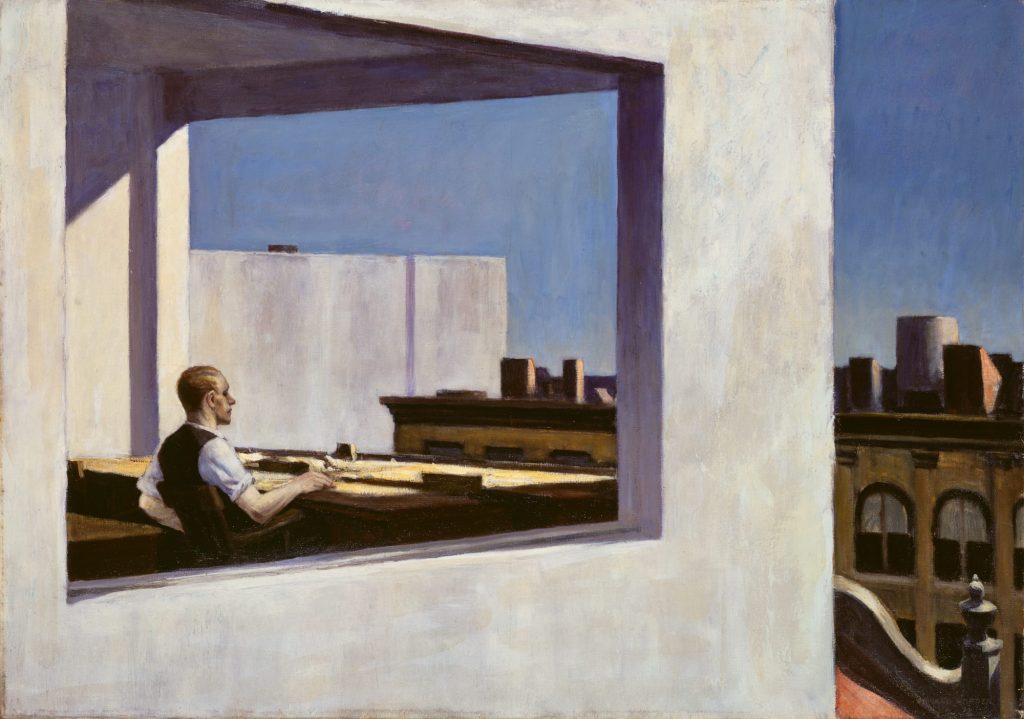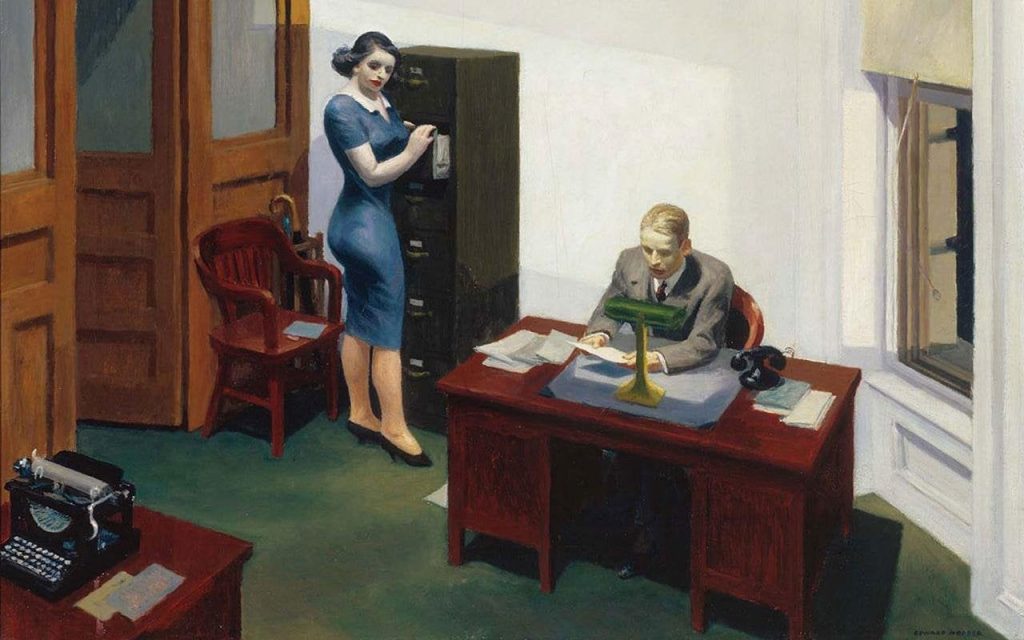The punctilious among you will notice that ‘gorgeousity’ is not strictly a word in the English language. This is a nod to Anthony Burgess’ A Clockwork Orange. Alex’s character reacts similarly to how I react whenever beholding a Hopper painting:
Oh bliss! Bliss and heaven! Oh, it was gorgeousness and gorgeousity made flesh. It was like a bird of rarest-spun heaven metal or like silvery wine flowing in a spaceship, gravity all nonsense now. As I slooshied, I knew such lovely pictures!
Hopper (Ashcan School, most important) offers us the direct opposite of interpretation. In fact, he was specifically getting away from what he and others, such as Sloan, saw as the prevalent, very mannered and untruthful Genteel Tradition. He wanted to show everyday life (especially in the great American cities, such as New York) in its toughness, squalor and often alienating loneliness. I think he succeeds very well in this aim. Louise G.
Hopper is widely considered the most important American realist painter of the 20th Century. His idiosyncratic style brings a new vector to realism.
Edward Hopper and his wife first rented a cottage in Truro, Massachusetts, in the summer of 1930, and they would return regularly through the 1950s. Hopper began Office in a Small City while he was staying in Truro in the summer of 1953, and he finished it in his New York studio in the fall. Rather than depicting the Cape Cod landscape, however,Office in a Small City is a scene that could have taken place in any American town in the mid-twentieth century. Hopper’s explanation of his earlier work Office at Night (1940; Walker Art Center, Minneapolis – below) also applies to this painting: “My aim was to try to give the sense of an isolated and lonely office interior rather high in the air, with the office furniture which has a very definite meaning to me.” Edward Hopper
This painting, for me, is the height of isolation. We do not know this office worker’s profession, location or emotional state. He seems utterly alone in this world that I am finding it difficult to describe what I see to you. What I do notice is that he does not seem to be doing much work. I know I will only role my sleeves up if it is exceptionally hot or if I am done for the day. Certainly the enormous windows is his corner office and the sun shining through hint to the former. With all this space he still seems trapped. As an aside, observe the fake decorative front of the building. This in contrast with the starkness of the room could be seen to be Hopper evoking his disdain for modern Utilitarian living.
The subject leans back on his chair observing the world go by, yet is totally detached from it as it does so. The contrast between his small stature and the vastness of the outside world further confirms the crushing loneliness of this piece.
I am so moved by this painting. These times are desperately difficult for us all and it is wonderful to see loneliness depicted through someone else’s vision, especially one as illuminating as Edward Hopper’s. I hope this painting brings some comfort and a reminder that there is always someone whose loneliness is more vast than ours.



